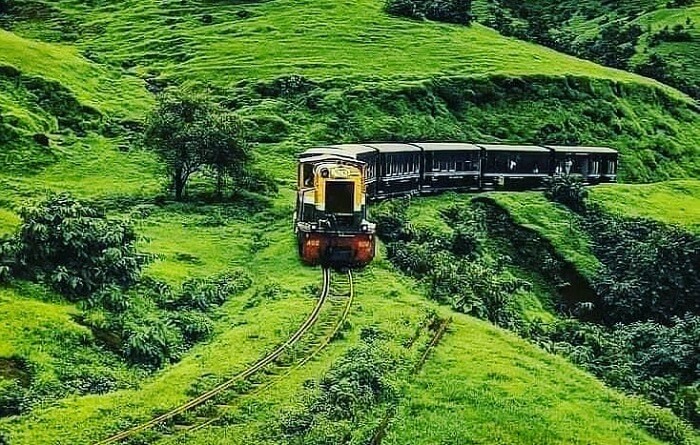Great News
Filmmakers and production companies often seek locations that offer both aesthetic appeal and practical advantages. India, with its vast array of landscapes, rich cultural heritage, and established film industry, presents a compelling case as a cost-effective and convenient shooting destination compared to other South Asian countries. This comprehensive analysis explores the various benefits of filming in India, highlighting its cost-effectiveness, logistical advantages, and the unique opportunities it offers to filmmakers.

1. Cost-Effectiveness in Filmmaking
1.1. Affordable Production Costs
India is renowned for its cost-effective filmmaking environment. The overall cost of production in India is significantly lower compared to many South Asian countries due to several factors:
- Lower Labor Costs: The cost of hiring local talent, including actors, crew members, and technicians, is relatively lower in India. This includes everything from camera operators to set designers.
- Cost of Equipment: Renting or purchasing filming equipment is generally more affordable in India. The country has a growing number of high-quality equipment rental services that offer competitive rates.
- Production Facilities: India’s film studios and post-production facilities are equipped with advanced technology and offer competitive pricing. Studios such as Film City in Mumbai and Ramoji Film City in Hyderabad are well-known for their affordability and quality.
1.2. Tax Incentives and Subsidies for Cost-Effective Film Production in India
Various state governments in India offer incentives and subsidies to attract film productions. These benefits can significantly reduce the overall cost of shooting:
- State-Specific Incentives: States like Maharashtra, Karnataka, and Kerala offer tax rebates, subsidies, and financial support to filmmakers. For example, the Maharashtra State Film, Stage, and Cultural Development Corporation offers rebates on production costs.
- Film Commissions: India has several state and regional film commissions that facilitate the process of obtaining permits and provide support for film productions, often including financial incentives.
1.3. Competitive Location Fees
Securing permits and paying location fees in India is generally more cost-effective compared to other South Asian countries. This affordability allows filmmakers to shoot in a variety of locations, from urban landscapes to scenic rural areas, without breaking the budget.
2. Logistical Advantages
2.1. Established Film Industry Infrastructure
India’s film industry is one of the largest and most established in the world. The country boasts a robust infrastructure that supports all aspects of Cost-Effective Film Production in India:
- Experienced Crew: India has a large pool of skilled professionals, including directors, cinematographers, sound engineers, and production designers. The extensive experience of Indian film crews in handling both domestic and international projects ensures high production quality.
- Advanced Facilities: Indian studios are equipped with state-of-the-art technology for filming and post-production. Facilities such as Adlabs Imagica and Studio A offer comprehensive services including sound stages, editing suites, and visual effects.

2.2. Transportation and Accessibility
India’s well-developed transportation infrastructure facilitates easy movement of equipment and crew across various locations:
- Extensive Network: The country has an extensive network of roads, railways, and airports, making it easier to transport equipment and personnel. Major cities like Mumbai, Delhi, and Chennai are well-connected both domestically and internationally.
- Diverse Locations: India’s diverse landscapes are easily accessible, from the Himalayan region in the north to the coastal areas in the south. This accessibility allows filmmakers to shoot in varied settings without significant logistical challenges.
2.3. Accommodation and Local Support
India offers a wide range of accommodation options, from luxury hotels to budget-friendly lodgings, catering to different needs and budgets:
- Accommodation Options: Major cities and popular filming locations have numerous hotels and guesthouses, ensuring that crew members and actors are well-accommodated.
- Local Support: Local film commissions and production assistants provide valuable support in terms of logistics, permits, and local knowledge, which can streamline the production process.
3. Creative and Aesthetic Opportunities
3.1. Diverse Landscapes and Settings
India’s diverse landscapes provide a rich palette of visual options for filmmakers:
- Urban Landscapes: Cities like Mumbai and Delhi offer a mix of modern and traditional architecture, providing dynamic urban backdrops.
- Natural Beauty: The country’s natural landscapes include snow-capped mountains, deserts, forests, and beaches, offering varied settings for different genres of film.
- Historical Sites: India’s numerous historical and architectural sites, such as the Taj Mahal and Jaipur’s forts, add a unique and culturally rich element to films.
3.2. Cultural and Traditional Elements
India’s cultural diversity enhances the creative possibilities for film productions:
- Festivals and Traditions: Indian festivals like Diwali, Holi, and Eid offer vibrant and colorful settings that can enrich film narratives.
- Traditional Arts: The country’s traditional arts, including dance forms, music, and crafts, can be incorporated into films to add authenticity and cultural depth.













4. Comparison with Other South Asian Countries
4.1. China
China is a major film market with significant financial resources, but it presents certain challenges:
- Political and Regulatory Constraints: Filmmakers often face stringent censorship and regulatory hurdles in China, which can limit creative freedom.
- Language Barriers: Mandarin is the predominant language, which can pose communication challenges for international teams.
4.2. Afghanistan and Pakistan
Filming in Afghanistan and Pakistan comes with notable risks and difficulties:
- Political Instability: Both countries have experienced significant political instability and security issues, which can disrupt filming schedules and endanger crew safety.
- Logistical Challenges: The lack of well-developed infrastructure and support systems can create logistical obstacles for film productions.
- Thus a better option for Cost-Effective Film Production is India
4.3. Bangladesh
Bangladesh offers some attractive filming locations but has its own set of challenges:
- Infrastructure Limitations: The film industry in Bangladesh is less developed compared to India, with fewer advanced production facilities and technical resources.
- Regulatory Environment: The regulatory environment in Bangladesh can be complex and less predictable, posing potential difficulties for international filmmakers.
5. Success Stories and Case Studies
5.1. Bollywood Productions
Bollywood’s global success demonstrates the advantages of filming in India. Productions such as “Slumdog Millionaire,” “The Lunchbox,” and “Lion” have utilized India’s diverse locations and talented crews to create critically acclaimed films that have resonated with international audiences.
5.2. International Collaborations
Several international filmmakers have successfully collaborated with Indian studios and crews. For instance, Hollywood productions like “The Man Who Knew Infinity” and “Azaadi Ke Liye – The Forgotten Army” have leveraged India’s resources and locations to enhance their storytelling.
6. Future Prospects and Opportunities
6.1. Growing Film Tourism
India’s growing popularity as a film destination is boosting film tourism. Locations featured in popular films are increasingly attracting tourists, which can provide additional revenue streams for local economies and create more opportunities for future film projects.
6.2. Evolving Industry Trends
The Indian film industry is continually evolving, with advancements in technology and an increasing focus on global markets. This evolution presents new opportunities for filmmakers to explore innovative storytelling techniques and collaborate on international projects. Thus allowing for Cost-Effective Film Production in India
Conclusion
Cost-Effective Film Production in India is established in the film industry infrastructure, diverse landscapes, and supportive environment make it an attractive destination for filmmakers. Compared to other South Asian countries, India offers significant advantages in terms of production costs, logistical ease, and creative opportunities. With its rich cultural heritage and modern facilities, India provides a compelling choice for both domestic and international film productions, promising a blend of aesthetic appeal and practical benefits.
Filmmakers seeking to optimize their production budgets while accessing a wide range of visual and cultural elements will find India to be an ideal location. As the film industry continues to grow and evolve, India’s position as a premier filming destination is set to strengthen, offering even more opportunities for innovative and successful film projects.
References:
- Film Facilitation Office – India
- Ministry of External Affairs – India
- National Film Development Corporation – India
- IMPPA (Indian Motion Pictures Producers Association)
This guide aims to help you find a line producer who meets your production needs and ensures a smooth filming process in India.
